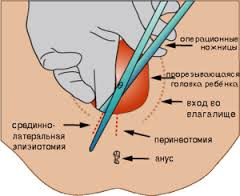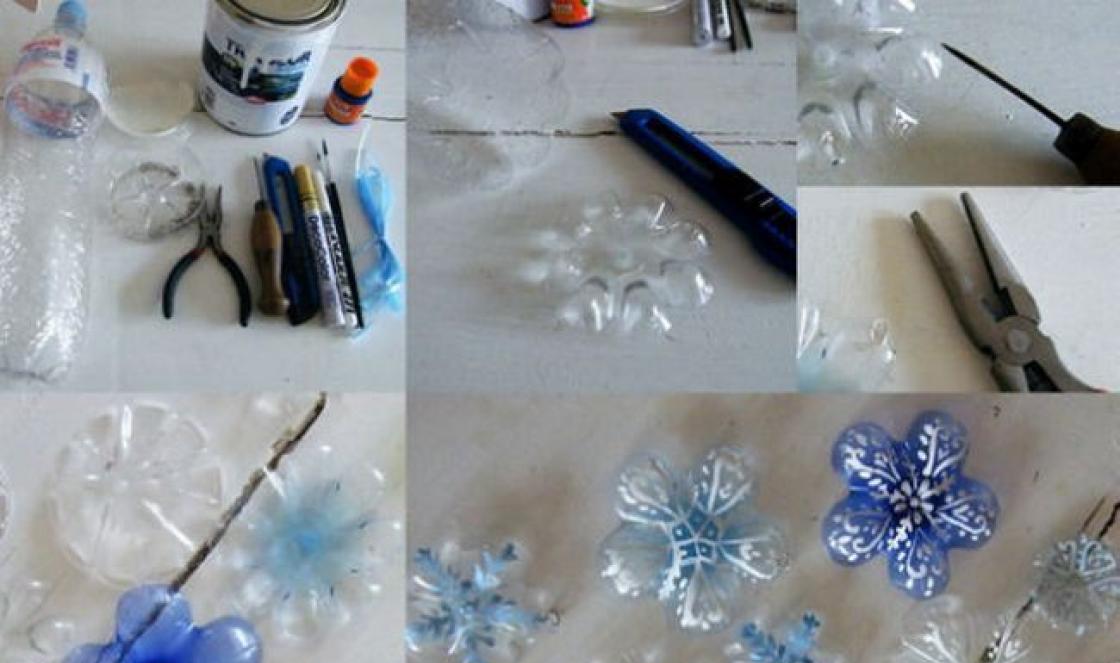If there is a suspicion that the seams have come apart, this should be determined as quickly as possible. It is very rare for the internal seams to come apart and it is impossible to notice it yourself. This condition is determined by the doctor during examination and such sutures are usually left undisturbed. Mainly susceptible to this process. This occurs due to the act of defecation during constipation, sudden movements, if a woman sits down incorrectly and abruptly.
If the sutures come apart the day after childbirth, repeated sutures are applied. But if time has passed and the stitches come apart when the edges of the wound have already healed, the doctor decides whether to re-stitch. If a couple of stitches have come apart, there is no threat to life and health, then the seams are usually not touched. When the suture has completely come apart, a repeat operation is prescribed, in which the edges of the wound are excised and the sutures are reapplied.
What to do if the seams come apart?
In the maternity hospital, doctors examine the woman every day and quickly take the necessary measures if the stitches begin to come apart. If a woman, after being discharged from the maternity hospital, thinks that the stitches have come apart, she should immediately go to the antenatal clinic for an examination and a plan for further treatment.
After childbirth, the sutures may cause pain for the first couple of days, then the pain should go away. External seams can bother you for quite a long time, especially if you do not follow the regime. It is natural that pain occurs when trying to sit down, however, if it hurts in a calm state, this may be a signal of an inflammatory process. The pain cannot be tolerated and you should definitely consult a doctor.
There are no direct indicators that the suture has ruptured, other than bleeding. Therefore, you should not engage in self-analysis and if you have any suspicions (changes in pain or other sensations), be sure to consult a doctor.
There is such a famous phrase: “men like to talk about how they fought, and women like to talk about how they gave birth.” It is worth noting that exaggeration of one’s own merits is common to both. A common basis for stories about their exploits are the scars that men carry from the battlefield as souvenirs, and women from the maternity hospital.
____________________________
What are the types of stitches after childbirth and how to care for them?
 1. Sutures placed on the cervix.
1. Sutures placed on the cervix.
Similar gaps occur during delivery of a large fetus. They can be detected by a gynecologist during a postpartum examination in the mirrors. As a rule, there are typical places for ruptures - at three and nine “o’clock” (doctors draw this analogy with a dial for convenience). When stitching cervical ruptures, anesthesia is usually not performed. This is due to the fact that after childbirth she temporarily loses sensitivity.
As suture material Catgut is used - biological tissue made from the wall of the small intestine of sheep. Catgut has the ability to dissolve, so there is no need for a second visit to the gynecologist to remove stitches. In addition to catgut, sutures after childbirth can be applied with semi-synthetic threads: vicryl, caproag, PHA. The seam can be continuous, or made in the form of separate stitches. Such internal seams after childbirth practically do not cause any inconvenience to the woman and special care not required.
2. Stitches in the vagina.
During a traumatic birth, vaginal tears can be of varying degrees of depth. To eliminate the defect, both continuous and separate seams are performed. Catgut is used as a suture material. Unlike cervical ruptures, surgery to repair vaginal damage is much more painful. Anesthesia is local, using novocaine or lidocaine. After surgery, pain may persist for several days.
3. Stitches on the crotch.
Perineal ruptures can be natural - if it is damaged during childbirth, or artificial - the dissection is performed by a gynecologist. According to the degree of tissue damage, perineal ruptures are usually divided:
I degree - only the skin is damaged;
II degree - rupture of the skin and muscle fibers of the pelvic floor occurs;
III degree, the most severe - the rupture reaches the wall of the rectum.
During childbirth, the gynecologist may make a dissection of the perineum in order to help the baby see the light and avoid traumatizing the mother. If the dissection occurs in the midline, it is called a perineotomy. If at an angle of 45° - episiotomy. When incised, the perineal area is anesthetized with lidocaine.
In cases of II and III degrees of rupture, sutures are applied in several rows, first the deep-lying tissues are sutured, and then only the skin. The last row of sutures is applied with non-absorbable threads - silk or nylon. The suture hurts after childbirth with perineal ruptures for quite a long time. In order for the defect to heal well, rest and regular treatment with antiseptic solutions are required.
After each act of defecation and urination, the suture area should be treated with a pink solution of potassium permanganate. A similar procedure must be carried out not only in the maternity hospital, but also after discharge for two months.
To prevent the suture from coming apart after childbirth, you need to follow a gentle regimen. For the first ten days, sitting down is strictly prohibited - you have to recline and eat, and do all the work while standing. Be sure to watch your stool - constipation should be strictly avoided. Eliminate bread and flour products from your diet. You should also not eat cereals for at least the first weeks. If there is no stool for several days, do a cleansing enema.
Why do gynecologists artificially create an incision during childbirth?
 Many women ask a similar question, finding surgery during childbirth undesirable. Internal seams after birth they cause a lot of inconvenience and require additional measures. Reasons why doctors resort to surgical assistance to women in labor:
Many women ask a similar question, finding surgery during childbirth undesirable. Internal seams after birth they cause a lot of inconvenience and require additional measures. Reasons why doctors resort to surgical assistance to women in labor:
. Rapid birth. In this situation, the fetal head experiences enormous stress. An episiotomy is performed to reduce it.
. Prevention of perineal rupture. With a large head, the perineum may spontaneously rupture. And in this case, its damage may be so deep that its further reconstruction will be difficult. When stitching such a tear, the likelihood of a dangerous complication—the seam coming apart after childbirth—is quite high. An incised wound heals much better and faster, and it is much easier to treat.
. With surgical dissection, the suture hurts for less time after childbirth.
. An episiotomy is also performed if a similar procedure was performed during a previous birth. Due to scar tissue, the perineum loses its elasticity, and the risk of rupture increases many times over.
What to do if the stitches come apart after childbirth?
 This situation is quite dangerous and requires the immediate intervention of a qualified specialist. If your stitches come apart after childbirth, do not delay visiting your nearest antenatal clinic. You can also seek help from the maternity hospital where the stitches were placed. The reasons that caused the seams to diverge:
This situation is quite dangerous and requires the immediate intervention of a qualified specialist. If your stitches come apart after childbirth, do not delay visiting your nearest antenatal clinic. You can also seek help from the maternity hospital where the stitches were placed. The reasons that caused the seams to diverge:
Sudden movements;
Suppuration;
Violation of the regime in the first ten days after birth.
If a fresh suture comes apart (on the first day after application), the doctor will treat the wound and re-tighten its edges. If the wound has already healed, but the suture has come apart completely, then the doctor’s tactics will be different - the edges of such a wound are excised, and the suture is reapplied.
Incisions and stitches after childbirth, video
Unfortunately, for most women, childbirth is so simple, it does not pass without consequences, and after a while various health problems begin to arise. For example, sutures placed during childbirth in the perineal area or on the abdomen after a cesarean section may well come apart.
Why can a postpartum suture come apart?
In fact, there can be a lot of reasons, and the seams often come apart for a reason. The simplest thing is to blame the doctors, yes, their fault also occurs, unfortunately! Sometimes negligence or the use of low-quality materials leads to such phenomena, but in most cases women are still to blame!
- Seam dehiscence occurs due to strong physical activity. Many, forgetting about their still painful condition, lift heavy buckets of water, work a lot, often bend over, all this provokes this. In some cases, even caring for your own newborn baby can be difficult and someone needs to be involved until the stitches finally heal! It is therefore recommended not to hold the baby in your arms when feeding, not to feed him while standing, not to wash diapers yourself, etc.
- It’s not for nothing that a man’s physical intimacy is prohibited for two whole months after childbirth! A woman who follows the gynecologist’s recommendations will completely avoid further health problems, because the body needs time to recover. Therefore, if you have stitches, try to refrain from intimacy, well, at least for a month after giving birth.
- Mechanical damage - a blow, a fall and anything unexpected that is associated with a sharp change in body position can cause the threads used to tighten the seams to rupture, and they, having burst, simply ceased to perform their functions.
Usually, whatever one may say, every woman, faced with something like this, understands why her stitches could come apart. You always need to take care of yourself and avoid new problems!
What to do, the seams have come apart...
Some women try to hold out for a while, but what they hope for is unclear. Perhaps they are ashamed, understanding the reasons for the sutures coming apart, maybe this is ordinary negligence towards their health, but they do not go to the hospital for a long time. It is worth saying that it is completely in vain! Whatever caused the seams to come apart, they need to be re-stitched as soon as possible. As soon as you notice something like this, you need to rush to the hospital for help! Otherwise, there is a risk of infection, the wound still exists, and only God knows what kind of infection can get.
In addition, having lost time, the edges of the sutures will begin to heal and grow together again, which will be problematic for them, so before suturing the doctor will have to cut them off a little again in order to get to the “living” cells that can grow together with each other. It turns out that by not consulting a doctor in time, a woman creates a lot of new problems for herself and, I must say, pain.
No matter how much you would like not to go to the doctor again, even if the reason is too “personal” for you, in any case, overcome yourself and just “run” to the appointment. The sooner you ask for help, the sooner they will help you!





